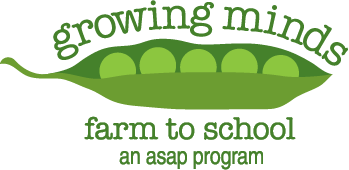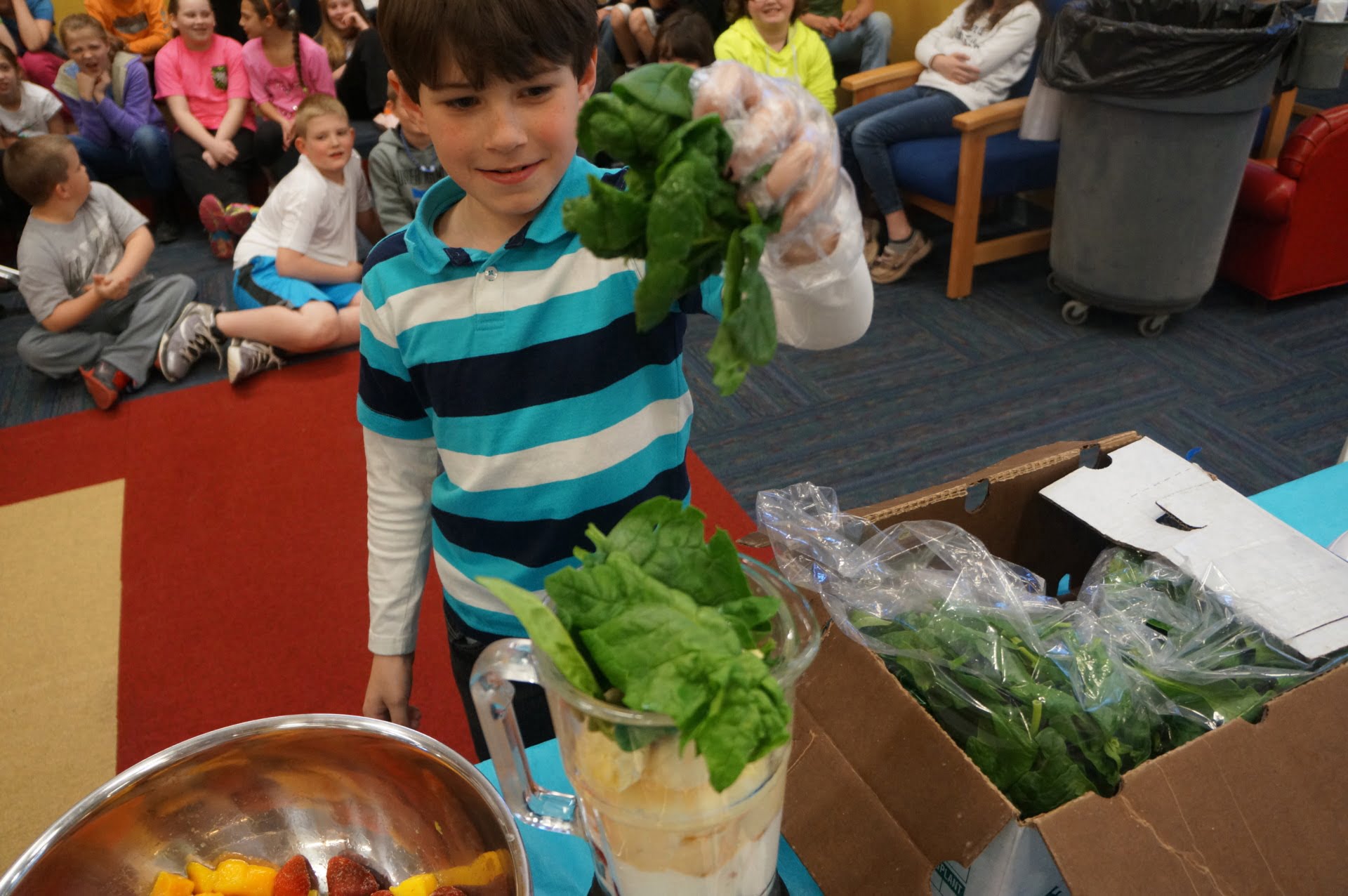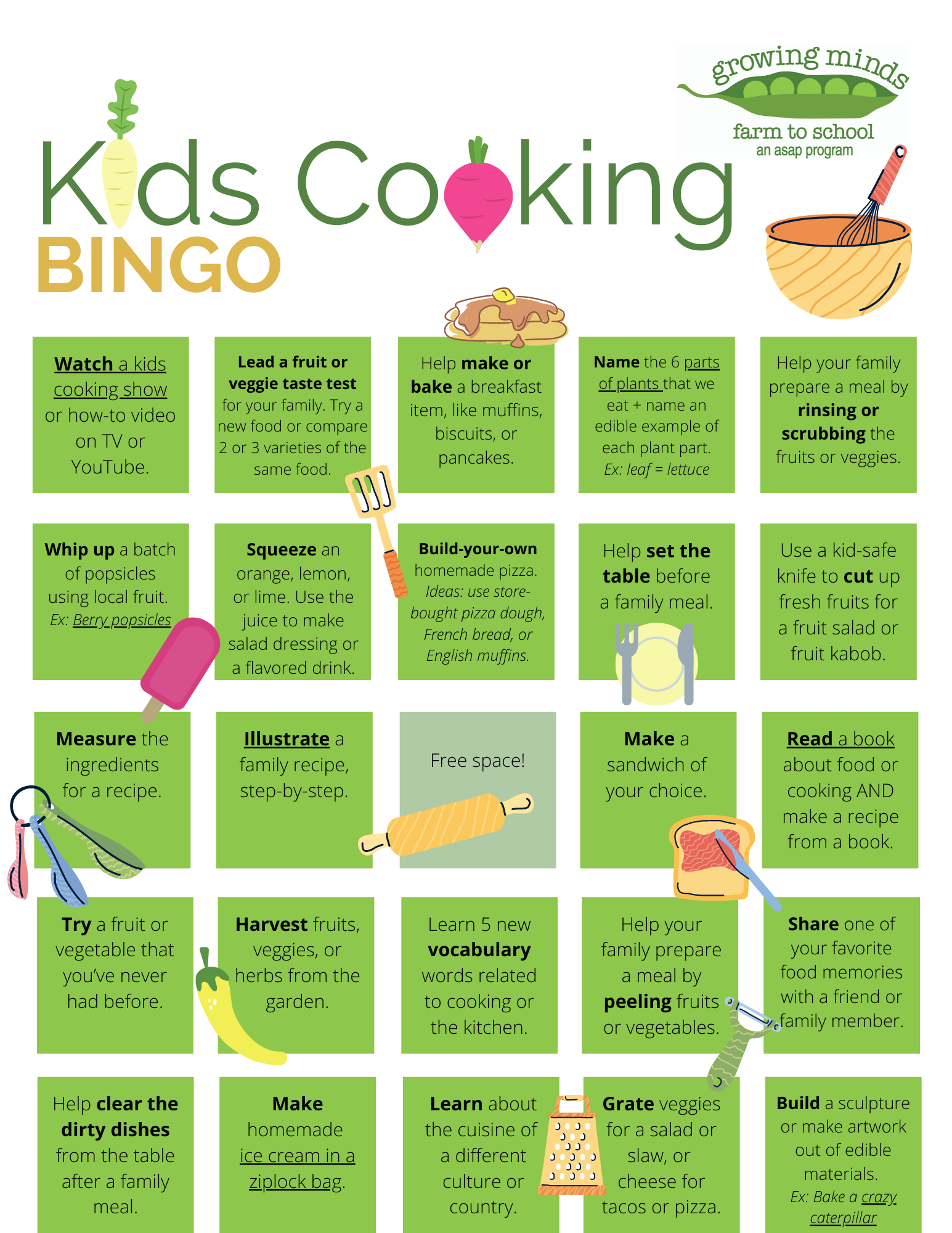This week’s theme is cooking with kids. Our “Growing Minds Day by Day” educational resource lists are designed for families and educators.
Helping prepare and cook food is a great way for children to learn and develop new skills, build self-confidence, and try nutritious foods. Cooking allows children to build physical, cognitive, social-emotional, and language skills. Cooking (especially with local, seasonal foods) also helps children learn about where their food comes from and what it looks like in its whole form, and gives them a connection to local farms. It can be a motivating way to practice skills and apply concepts from across curriculum areas, such as fractions, reading, counting, measuring, and critical thinking. With a little preparation, inviting children to help out in the kitchen can be a fun and rewarding experience for the whole family.
Books:

How to Feed Your Parents
Our first recommendation this week is How to Feed Your Parents, written by Ryan Miller and illustrated by Hatem Ally. Who’s the picky eater in this house? Not Matilda! A little girl with adventurous tastes turns the tables on her food-fussy parents and teaches them that dinner can be more than chicken nuggets. Matilda Macaroni loves to try new foods, whether it’s her grandma’s jambalaya, or sushi at a sleepover. But, in this fun, twisted picture book, it’s finicky mom and dad—not the child—who eat only pizza with pepperoni (delivered), burgers from a bag, or noodles from a box. Eager to experience new flavors, Matilda secretly sets out to learn how to cook, satisfy her hunger for something more … and expand her parents’ palates, too. Watch a read aloud on YouTube.
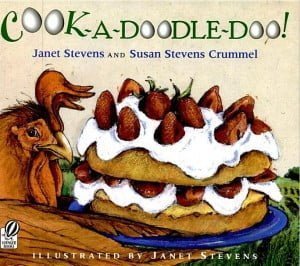 Cook-A-Doodle-Do!
Cook-A-Doodle-Do!
Our next book of the week is Cook-A-Doodle-Do!, by Janet Stevens and Susan Stevens Crummel. The big, brown rooster wants to make a strawberry shortcake, so he enlists the help of his friends, Turtle, Iguana, and Pig. Together they learn to cook and try to make a delicious treat. With a lot of cooking tips and information, this book is a great introduction to cooking for children ages 4-7. Watch a read aloud of Cook-A-Doodle Do! on YouTube.
Find more books
Both of the books featured above are available for check-out from our Growing Minds lending library. Looking for more food-themed children’s books? Visit the Growing Minds’ farm to school literature database to browse our recommendations. Type “cooking” into the search bar to find books that align with this week’s theme. Type “diversity” into the search bar to find books that feature characters from underrepresented racial and ethnic groups.
Local Food Recipe:
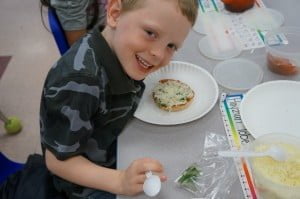 Since most kids love pizza, it’s a great entry point for getting children involved in the kitchen. This simple recipe calls for local tomatoes, which are just beginning to show up at farmers markets in our Appalachian Grown region this month, plus fresh basil, an aromatic herb that’s easy to grow at home. A store-bought dough ball could be divided into 3 or 4 smaller pieces in order to make “personal pan pizzas.” If stretching, shaping, and baking pizza dough seems too ambitious for your family or classroom right now, you could substitute French bread, English muffins, or even flour tortillas as the base for kid-sized pizzas.
Since most kids love pizza, it’s a great entry point for getting children involved in the kitchen. This simple recipe calls for local tomatoes, which are just beginning to show up at farmers markets in our Appalachian Grown region this month, plus fresh basil, an aromatic herb that’s easy to grow at home. A store-bought dough ball could be divided into 3 or 4 smaller pieces in order to make “personal pan pizzas.” If stretching, shaping, and baking pizza dough seems too ambitious for your family or classroom right now, you could substitute French bread, English muffins, or even flour tortillas as the base for kid-sized pizzas.
Tomato Basil Pizza
Serves 3-4
Ingredients:
- 1 container store-bought pizza dough
- 1/2 cup of your favorite marinara (tomato) sauce
- 1 medium local tomato, chopped
- 3/4 cup shredded part-skim mozzarella cheese
- Basil leaves
Directions:
- Preheat the oven to 400°F.
- Roll out dough and precook according to the package’s instruction.
- Spread marinara on dough, add a layer of tomatoes, and then sprinkle on the mozzarella.
- Bake until golden brown, about 10-15 minutes.
- Just before serving, sprinkle basil leaves over pizza.
Educational Resources:
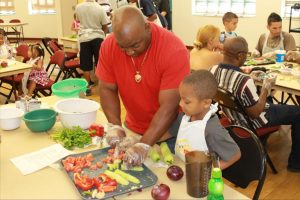 If you’re new to cooking with kids in the home kitchen or the classroom, take some time to explore the local food cooking resources we’ve compiled on the Growing Minds website. You’ll find tips, recipes, and videos that will help you get started.
If you’re new to cooking with kids in the home kitchen or the classroom, take some time to explore the local food cooking resources we’ve compiled on the Growing Minds website. You’ll find tips, recipes, and videos that will help you get started.
Preschool teachers or parents of young children might also appreciate our Cooking Play lesson plan, which will introduce kids to a variety of cooking tools, helping them to build their knowledge and confidence so that they can begin to help out in the kitchen.
Finally, explore some of our favorite kid-friendly cookbooks and cooking curriculum by searching for “cookbooks” in our farm to school literature database. Remember that all of the books in our database are available to check out from our Growing Minds lending library.
Kids Cooking Show Recommendations:
- Cookie Monster’s Foodie Truck on YouTube (Sesame Street)
- CBeebies My World Kitchen on YouTube (BBC)
- Amazing Amy Amor Channel on YouTube (kid-hosted)
- List: The 6 Best Cooking Videos for Kids on YouTube (via Epicurious) – Includes shows hosted by kids
Activity:
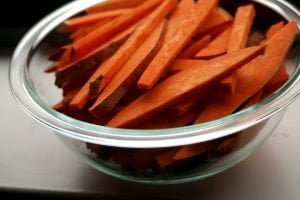 Sweet Potato Taste Test
Sweet Potato Taste Test
Locally grown sweet potatoes start coming into season during July in our Appalachian Grown region. Celebrate their arrival by helping your child put on a raw sweet potato tasting for family, neighbors, or friends.
First, look up sweet potato facts with your child. The more your child feels like and is recognized by others as a “vegetable expert”, the more likely they’ll be to eat vegetables they wouldn’t otherwise try. Here’s a fun sweet potato fact to get you started: George Washington Carver, a famous African American scientist, developed 118 products from sweet potatoes, including glue for postage stamps. Once you’ve collected fun facts to share, it’s time to host the tasting.
To prepare a sweet potato tasting, wash and peel a sweet potato and then cut it into thin sticks. The sweet potato will look and taste a bit like a carrot. Offer the sweet potato samples to friends and family and ask them what they think about the snack. Once everyone has had a taste, reveal that they are eating raw sweet potato. If you’d like, try offering carrot and sweet potato tastes side-by-side. Which do participants like more?
Take this activity further by hosting taste tests with different varieties of seasonal summer produce. View our Appalachian Growing Seasonality Chart see what else is in season this month in our mountain region. Side-by-side taste of different types of heirloom tomatoes or cherry tomatoes, various sweet peppers, or different colors of string beans (like purple, green, and yellow) would all make for fun summer taste tests.
Kids Cooking Bingo:
Cap off your week of culinary exploration with our Kids Cooking bingo game! Use the bingo card below to keep track of and celebrate your kid’s cooking-related activities and accomplishments. Kids should check five consecutive boxes in a row, column, or diagonal to win (bonus points for checking all of the boxes!). Most importantly, have fun! Click here to download a printable PDF Bingo Card that has hyperlinks to helpful resources.
Bingo Tips:
- Use the resources shared above (children’s books, pizza recipe, taste test activity, and links to kids cooking shows) to complete some of the bingo squares.
- Challenge another household to a bingo tournament! Take photos or videos to document each activity square that your kids complete, and share them with each other as you play.
- Keep in mind that the cooking activities your child will be able to participate in will depend on their age. If you’re unsure what your kids can safely help with, review the resource “Cooking Abilities of Young Children”, located in the Appendix (page 194) of our Farm to Preschool Toolkit.
That’s it for this week. Check back next week for new resources. Click here to access Day by Day resources from past weeks. If you didn’t find what you’re looking for here, please visit our Lesson Plans page.
